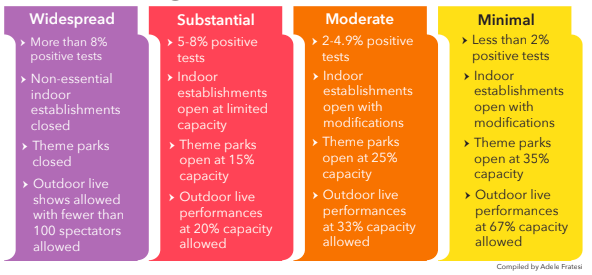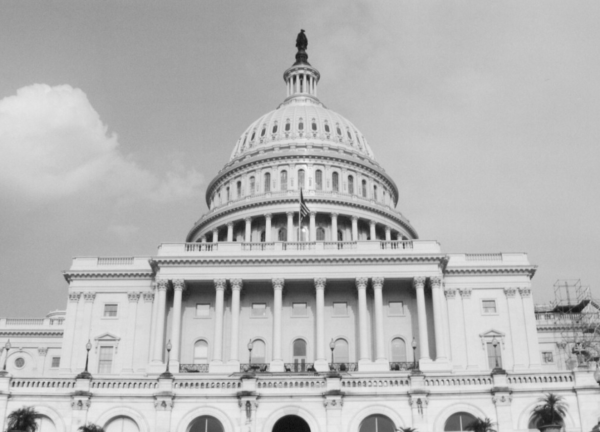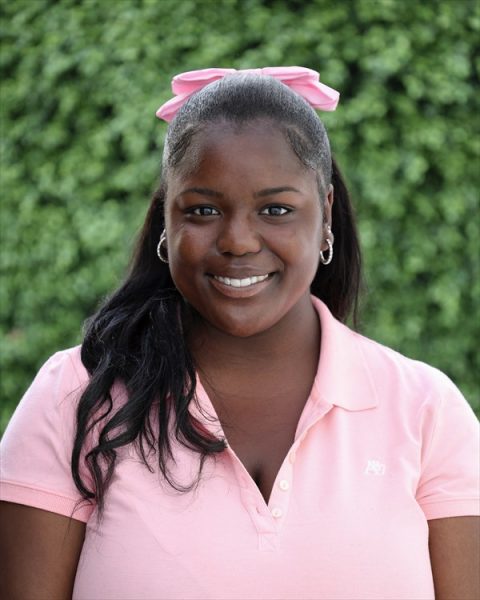Red/Orange Tiers loosen restrictions
Community navigates easing COVID-19 precautions

April 20, 2021
Along with a declining trend in COVID-19 cases across the country, students are planning for their upcoming Easter Break. As of press time San Francisco was expected to transition from the Red to the Orange Tier on March 25, allowing for even fewer restrictions for public activities during the week off from school.
“You still have to be really careful because nothing has changed except we have some portion of the population that’s now immune to COVID-19,” Dr. George Rutherford, Epidemiology & Biostatistics professor at the University of California San Francisco, said. “If you choose to travel, by car is the safest way to go. If you’re talking about families that have teenage kids, not many people will be vaccinated, so you have to be careful because this is all the same risk.”
The Centers for Disease Control and Prevention recommend travelers get vaccinated if eligible, get a viral test one to three days before the trip, get tested three to five days after the trip and self-quarantine for seven days after returning. The precautions are supplemental to masks and social distancing measures.
“I’m planning on going to Palm Springs this break, but my family and I are still being very cautious of COVID-19 precautions,” junior Avery Stout said. “We will be driving, only staying at hotels with 10% capacity, and not dining out as much.”
California counties in the Red Tier may open ballparks and outdoor live shows to the public at 20% capacity and amusement parks at 15% capacity. Counties qualify for the Red Tier when the test positivity is between 5-8% and indoor dining, gyms, movie theatres, and other businesses may open with limited capacity.
A change from the Red Tier to the Orange Tier will allow for full capacity with modifications in retail stores and malls. Movie theatres and places of worship will increase capacity from 25% to 50%. Counties will qualify for the Orange Tier if the positivity rate is between 2-4.9%, prompting most indoor establishments to open with modifications.
“I think these reopenings are safe enough, but if you are not going to use the two major strategies, which are vaccinations and screenings, for keeping infectious people out of these venues then you have to depend on the usual mitigation measures,” Rutherford said. “People still have to wear masks and they have to be able to socially distance, which is about reduced density.”
The home ballparks of the San Diego Padres, Los Angeles Angels, and Oakland Athletics will open to the public at limited capacity, starting April 1. The Los Angeles Dodgers and San Francisco Giants may also open later in April because they begin the season on the road.
“I’m a Giants fan and I used to go to lots of baseball games before the pandemic hit,” junior Elizabeth Mullen said. “I will most likely wait until everyone is vaccinated to attend games again, but I’m excited for the day to come.”
The Orange Tier invites relaxed restrictions on indoor dining, with restaurants open at 50% capacity and other indoor establishments such as malls, retail, and hair and nail salons open with modifications. Hotels will open with modifications with indoor pools and fitness centers at 25% capacity.
“I think if you are going to dine indoors with your family, and the restaurant has the tables spread out, and you aren’t dining with people with risk factors, you are probably okay,” Rutherford said. ”It’s all about individual risk and you have to weigh that against the benefits.”









